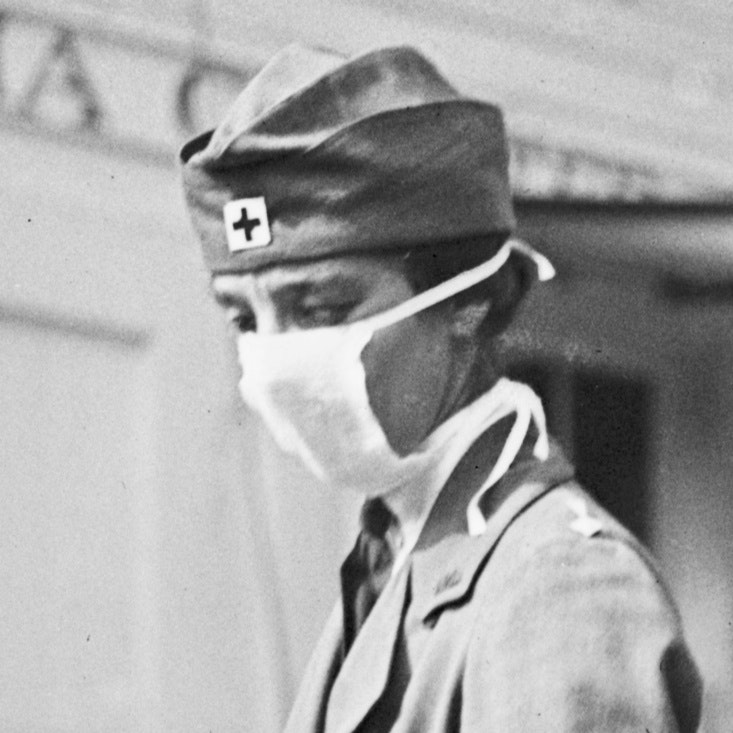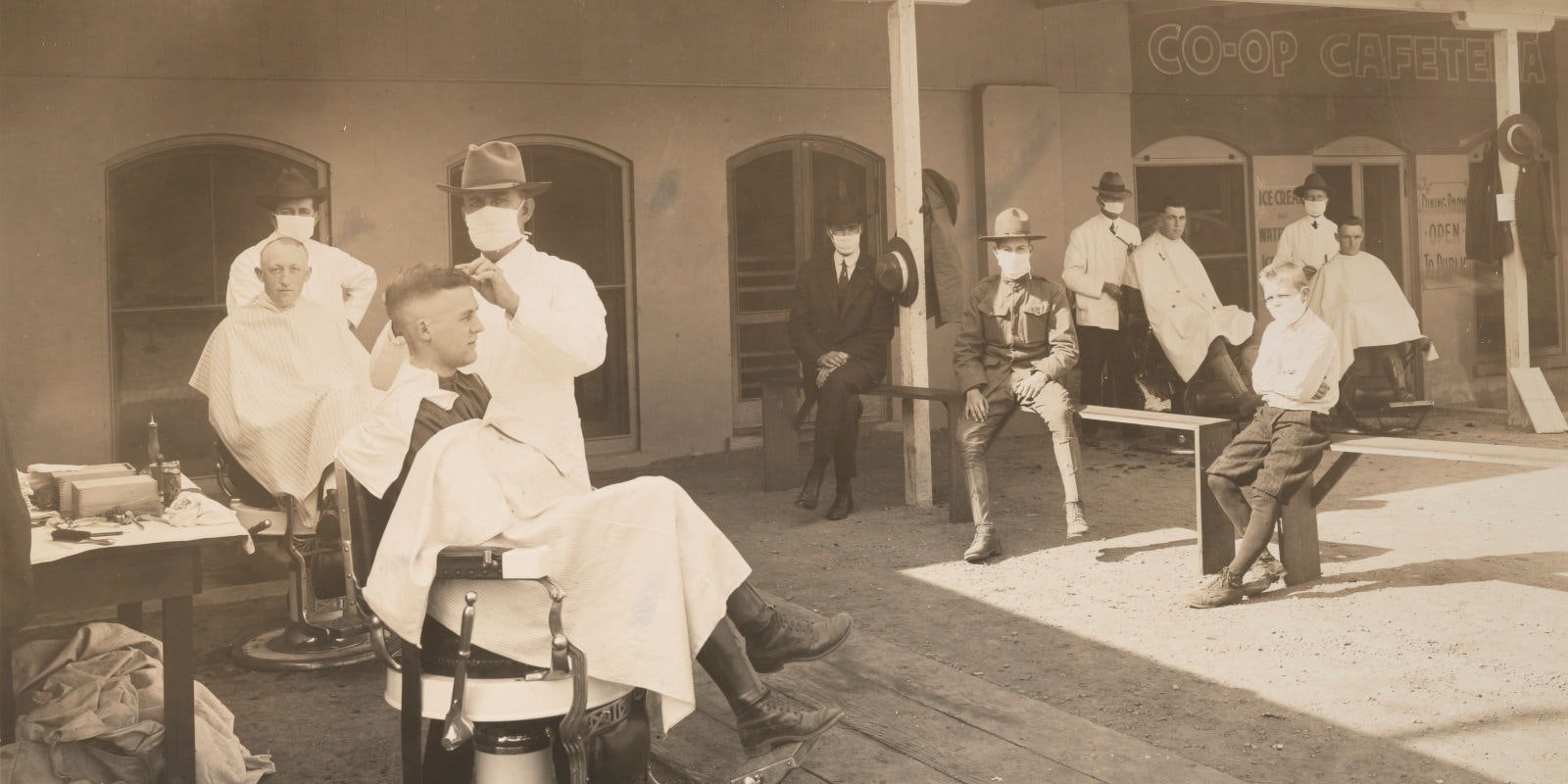Now that the Centers for Disease Control and Prevention (CDC) has recommended wearing masks when we are out and about, it seems as if everyone with a sewing machine is sewing their own, sharing patterns, and creating bulk orders to give out to essential workers. This is, of course, not a new phenomena. During the Spanish flu pandemic, women (and presumably some men) sewed tens of thousands of gauze masks.
In cities throughout the country people were required to wear masks at all times. In other areas people were prohibited from riding public transportation or going to school without masks. Failing to do so would result in as many as 10 days in jail or fines ranging from $5 to $100. One source I read claimed the fine for not wearing a mask in one area was $500, which translates to almost $8,500 in today’s currency.

A nurse or a Red Cross volunteer wearing a gauze mask to help prevent the spread of influenza. Such masks were typically sewn by volunteers and distributed by the Red Cross and other organizations. Photo Credit: National Photo Company Collection from the Library of Congress
Just as is happening today, everyone who could sew and was willing to pitch in made masks. At one point students at the University of California, Berkeley sewed 8,300 masks in just 3 days and went on to sew a total of about 24,000. Newspapers had instructions for sewing masks so anyone at home could sew their own, and sewing circles around the country organized to create masks not just for locals in need, but also to send to soldiers on the front line.
These masks would not have been made from the lovely quilting cottons many are using today, but instead, it was required they be sewn from layers of gauze. Ads placed in newspapers by the Red Cross claimed "A Gauze Mask is 99% Proof Against Influenza." In some areas, it seems the requirement was at least 4 layers while in others, 6 layers were suggested. Instructions I found from a Montana newspaper used a large piece of gauze that was then folded many times to get the required layers before pleats and seams were added. It also suggested adding a stitch of black thread at the corners to indicate which side was the front—a very clever addition.
Gauze masks were known as “flu fences” and “chin sails,” and there were fabulous mottos used on signs and in newspapers around the country to encourage folks to wear them whenever possible. My personal favorite is “Obey the Law. Wear the Gauze. Protect You Jaws from Septic Paws.” Of course, not everyone used the masks as intended. For example, masks with flaps were devised for smokers—although some chose to simply lift the masks up to their foreheads when out having a smoke. Waiters in some areas didn’t have to wear masks when serving food because they inhibited easy breathing. The list goes on.
The big takeaway is that then, as now, when dealing with adversity, makers are more than happy to step forward and help in any way they can. People around the country are sewing masks by the thousands and some are even working with hospitals to sew gowns for medical professionals. I’ve seen other people crochet ear savers and 3D print medical supplies with guidance from their local hospitals. As we collectively sew (and crochet and design and print and otherwise make), it’s good to remember we’re not alone now or in the grand scheme of history. We prevailed before and will do so again.
Christina
RESOURCES
Berkely Shut Schools, Required Masks in 1918. Read a Woman’s Letter from that Pandemic
Everyone Wore Masks During the 1918 Flu Pandemic. They Were Useless.
Harmon’s Histories: Face Masks Were Required as Spanish Flu Neared Missoula
"You Must Wash Properly." Newspaper Ads From the 1918 Flu Pandemic Show Some Things Never Change

